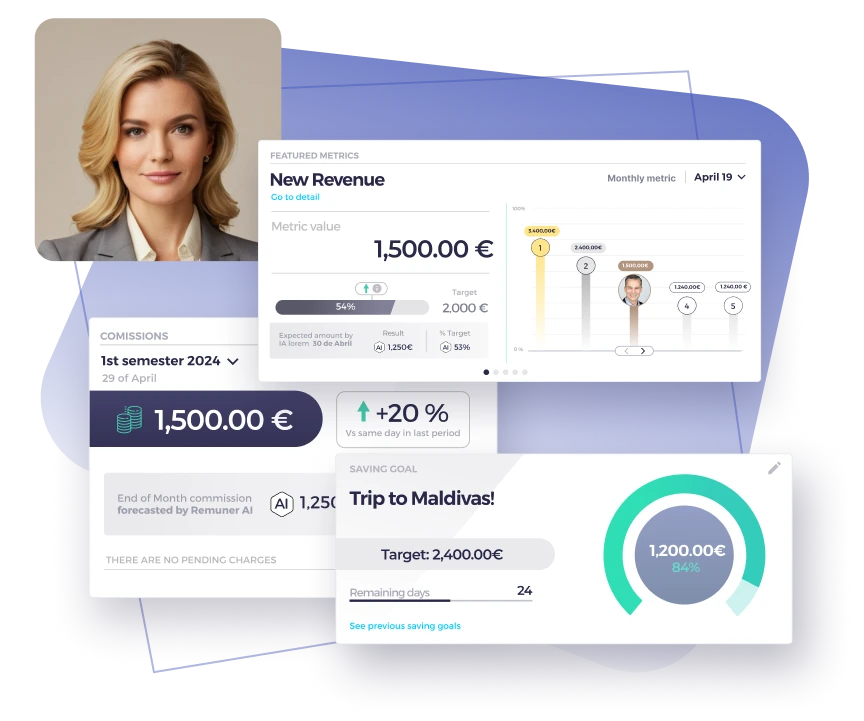Annual Recurring Revenue (ARR) is a crucial metric for businesses, especially in the SaaS industry. It shows the predictable and recurring revenue a company can expect each year. Understanding this KPI and using it effectively can significantly impact a company's decisions and growth.
Table of contents
What is Annual Recurring Revenue (ARR)?
ARR is the total recurring revenue a company generates annually. It is essential for subscription-based businesses (such as SaaS companies), as it helps gauge financial health and future revenue expectations. It includes revenue from subscriptions, service contracts, and recurring revenue expansions (upsells and crossells), excluding any one-time fees.
Why is ARR important?
This KPI is essential for several reasons:
- Revenue forecasting: it helps predict future revenue, enabling better financial planning and resource allocation.
- Measuring growth: by comparing ARR year-over-year, companies can track growth trends and identify areas for improvement.
- Investor confidence: investors use annual recurring revenue to assess a company’s long-term consistency and profitability.
- Strategic planning: ARR aids in making informed decisions about marketing, sales strategies, and product development.
How to Calculate ARR
Calculating this KPI involves a few simple steps:
- Determine total contract value (TCV): identify the total value of all recurring contracts, excluding one-time fees.
- Monthly recurring revenue (MRR): divide the TCV by the number of months in the contract to find the monthly recurring revenue.
- Annualize the MRR: multiply the MRR by 12 to get the ARR.
Example Calculation:
- A company has a contract worth $24,000 over 24 months. The MRR is $1,000 ($24,000 / 24 months).
- The ARR is $12,000 ($1,000 x 12).
Benefits of using ARR
Understanding and using annual recurring revenue offers several benefits:
- Revenue predictability: it provides a clear view of future revenues.
- Customer insights: analyzing recurring revenue reveals customer behavior patterns and opportunities for upselling or cross-selling.
- Churn management: monitoring recurring revenue helps detect declining trends and take proactive measures to reduce churn.
- Sales strategy: ARR guides sales teams to focus on high-value customers and improve retention strategies.
ARR vs. other metrics
While ARR is crucial, it’s important to compare it with other metrics:
- Monthly recurring revenue (MRR): MRR measures revenue monthly, providing a more detailed view. It’s useful for businesses with shorter subscription cycles.
- Total contract value (TCV): TCV includes the entire value of a customer contract, including one-time fees. It’s broader than ARR and useful for understanding the full financial impact of a contract.
- Annual contract value (ACV): ACV measures the value of a customer contract over one year, regardless of the contract length. It’s similar to ARR but focuses on individual contracts.
- Non-recurring revenue (NRR): NRR accounts for one-time purchases and fees, providing insight into non-subscription-based revenue streams.
Impact in the business
Annual recurring revenue is more than a financial metric; it shapes business strategies:
- Revenue forecasting: it allows accurate revenue predictions, crucial for budgeting and financial planning.
- Customer retention: high ARR growth indicates strong customer retention and satisfaction. Companies can develop targeted retention strategies, like personalized customer engagement and loyalty programs.
- Sales performance: monitoring ARR helps identify top-performing sales teams and individuals. Companies can reward high achievers and provide additional training to under performers.
- Marketing strategies: ARR insights guide marketing efforts by highlighting successful campaigns and areas needing improvement. This optimizes marketing spend and increases ROI.
- Product development: analyzing ARR trends helps identify popular products or services and invest in further development. This keeps the company ahead of market demands and increases customer satisfaction.
Best practices for maximizing ARR
To fully leverage annual recurring revenue, companies should follow these best practices:
- Focus on customer success: If your customers achieve their desired outcomes with your product, they won’t leave you, and this will lead to higher retention rates and greater ncreased ARR. Implement customer success programs to provide ongoing support and value. For more insights, check out HubSpot’s customer success guide.
- Upsell and cross-sell: Identify opportunities to offer additional products or services to existing customers. This increases ARR and strengthens customer relationships.
- Regularly review pricing strategies: Periodically evaluate your pricing models to ensure they align with market trends and customer expectations. Competitive pricing attracts and retains more customers.
- Monitor churn rates: Keep a close eye on customer churn and take proactive measures to address any issues. High churn rates can significantly impact ARR, so it’s crucial to identify and mitigate the causes. For strategies on reducing churn, refer to this guide.
- Invest in sales training: Equip your sales team with the skills and tools they need to close deals and retain customers effectively. Regular training sessions and performance reviews drive better results. Explore Remuner’s sales compensation software for optimizing your sales team’s performance.
- Enhance customer experience: Deliver exceptional customer service at all touchpoints. A positive customer experience leads to higher satisfaction, loyalty, and increased ARR.

Challenges in managing recurring revenue
While ARR is a powerful metric, managing it effectively comes with challenges:
- Accurate data collection: ensuring accurate and up-to-date data is critical for calculating ARR. Inaccurate data can lead to misleading insights and poor decision-making.
- Changing customer preferences: customer needs and preferences can change over time, impacting ARR. Companies must stay agile and adapt their offerings to meet evolving demands.
- Competitive landscape: increased competition can affect customer retention and acquisition, influencing ARR. Companies need to continuously innovate and differentiate themselves in the market.
- Complex contracts: managing ARR for complex contracts with varying terms and conditions can be challenging. Companies must have robust systems to track and manage these contracts effectively.
Conclusion
Annual Recurring Revenue is a cornerstone metric for subscription-based businesses. It provides invaluable insights into revenue predictability, customer retention, and overall business health. By understanding and leveraging recurring revenue, companies can make informed decisions, optimize their strategies, and drive sustainable growth.
Whether you’re a SaaS company or any other subscription-based business, focusing on this KPI can help you achieve your financial goals and build a solid foundation for long-term success.
Explore Remuner’s comprehensive sales compensation software to streamline your compensation plans and drive your business growth.





